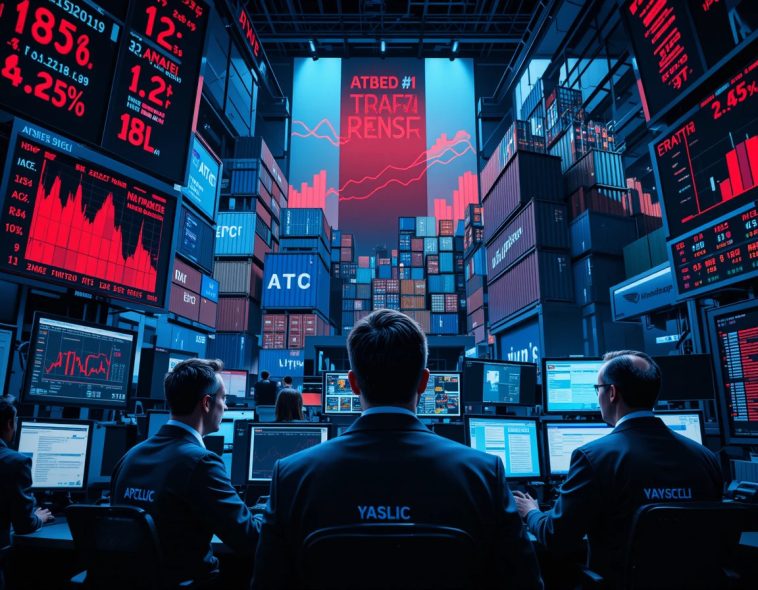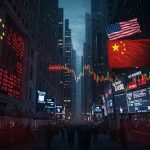The risk of a tariff-induced recession has significantly increased following President Trump’s announcement of reciprocal tariffs on countries worldwide, according to leading Wall Street economists. This tariff-induced recession threat is creating ripples throughout financial markets as analysts revise economic forecasts downward.
Tariff-Induced Recession Vulnerability Rising
In a note published Wednesday, Oxford Economics economist Ryan Sweet warned that the economy has become “dangerously vulnerable” to a tariff-induced recession within the next 12 months. Sweet emphasized that average US tariff rates are poised to reach levels not seen in a century, creating substantial economic headwinds.
Sweet identified three critical factors driving this increased recession risk: heightened inflation dampening real disposable income, tightening financial conditions potentially leading to equity declines, and elevated trade policy that will “suffocate” business investments and weigh on hiring decisions.
Economic Forecasts Deteriorating Under Tariff Pressure
Oxford Economics has revised its 2025 GDP growth outlook downward to 1.4% from its previous 2% forecast. The firm now projects core inflation to rise to 3.9% this year, substantially higher than its prior 3.1% estimate, highlighting how the tariff-induced recession risk is affecting long-term economic projections.
These revised forecasts point to stagflation—a bleak economic scenario combining stalled growth, persistent inflation, and rising unemployment—becoming increasingly probable in Wall Street’s economic projections.
Tariff-Induced Recession Signals Appearing in Economic Data
Recent economic indicators are reinforcing concerns about a potential tariff-induced recession. Data from the Bureau of Economic Analysis revealed consumers spent less than forecast in March while inflation exceeded expectations—suggesting stagflation cracks are appearing in hard economic data. This coincided with weakening survey and sentiment readings highlighting increased pessimism regarding inflation and labor market prospects.
Federal Reserve Position vs. Economist Warnings
The Federal Reserve has maintained that tariff-induced inflation will be “transitory” with short-term price growth impact. Their latest projections forecast year-end PCE inflation rising to 2.7% before gradually reaching the 2% target by 2027.
However, many economists challenge this perspective, arguing the Fed has underestimated how tariffs will push inflation higher. EY economist Greg Daco projects the increased cost of imports would represent an annual income loss of $690 for average households, with lower-income families facing losses exceeding $1,000.
Wall Street’s Growing Tariff-Induced Recession Concerns
Major financial institutions are increasingly sounding alarms about tariff impacts:
- Morningstar described the tariffs as “a self-inflicted economic catastrophe,” estimating recession risks have climbed to at least one-third
- JPMorgan economist Michael Feroli highlighted potential negative disposable income growth in the second half of the year, noting these impacts alone could bring the economy “perilously close to slipping into recession”
- Bank of America categorized the stagflationary scenario as “much more likely now,” warning rising inflation and falling GDP could push the economy “to the precipice of recession”
Divergent Views on Federal Reserve Response
Despite consensus on economic risks, analysts differ on how the Federal Reserve might respond. Bank of America suggests higher inflation risks could make it “even harder for the Fed to cut this year,” though they anticipate substantial easing next year.
Conversely, Neil Dutta, head of economic research at Renaissance Macro, argues negative growth effects will ultimately outweigh inflation concerns. He predicts four interest rate cuts by year-end, aligning with current market expectations of three to four cuts.



